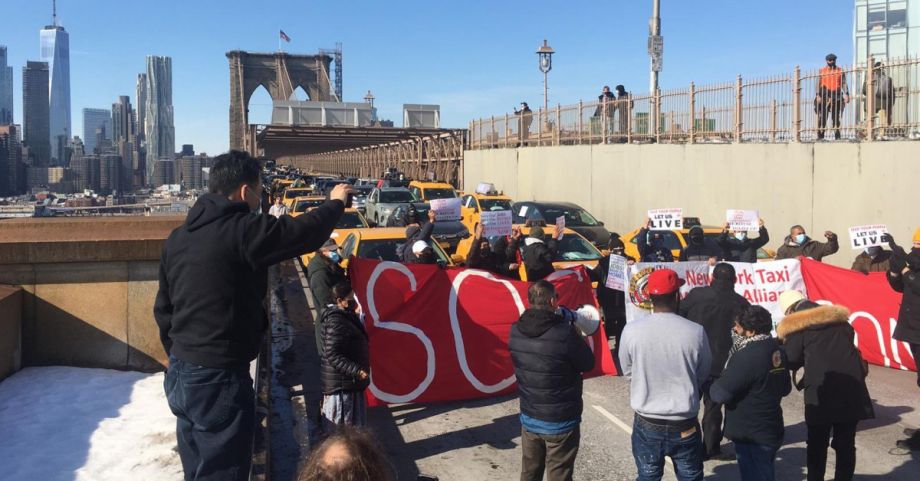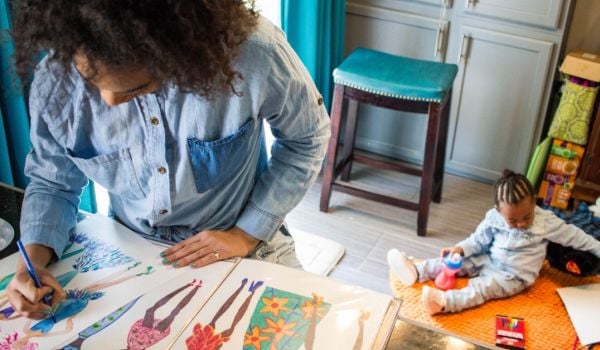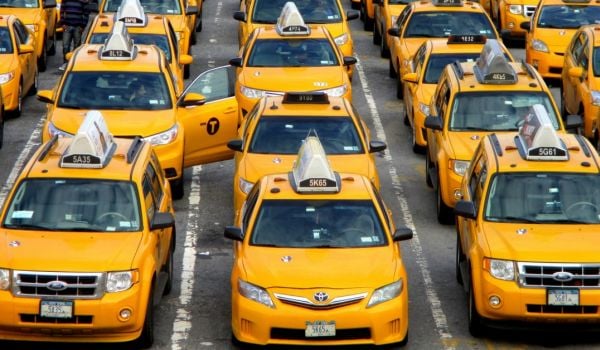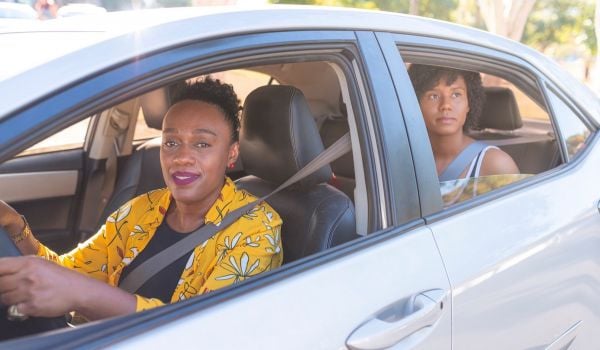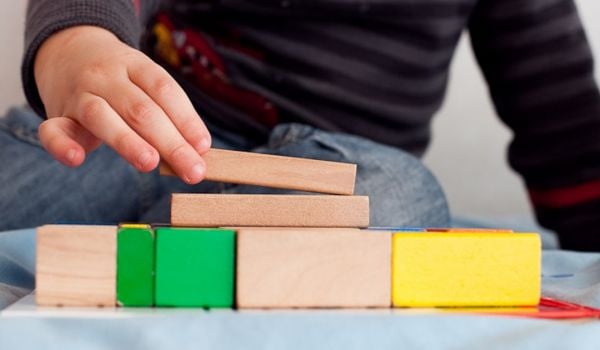Amazon Changed Traffic Light Timing During Union Drive
In Bessemer, Alabama, where Amazon warehouse workers could become the first of Amazon’s US employees to unionize, the company persuaded county officials to change the timing of a traffic light outside the warehouse, More Perfect Union reports.
Union organizers say that the change meant that union canvassers had less time to talk to workers stopped at the light.
The Verge adds that Amazon notified the county of “traffic delays during shift changes,” and that there is no evidence Jefferson County officials were “aware of the organizing drive or any effect the traffic light changes might have on the effort.”
The workers are currently in the middle of mail-in voting to decide whether they will join the Retail, Wholesale and Department Store Union. Ballots need to be returned by March 29, The Verge reported separately.
Taxi Drivers Shut Down Brooklyn Bridge, Demanding Medallion Debt Forgiveness
Even pre-COVID, many taxi drivers holding artificially costly medallions were drowning in debt. Now, with ridership down 80-90 percent over pre-COVID levels, the situation is even worse. Earlier this month, members of the New York Taxi Workers Alliance rallied on the Brooklyn Bridge, shutting down traffic in one direction, to demand debt forgiveness.
In 2019, a New York Times investigation found that the price of a taxi medallion rose from $200,000 to $1 million between 2002 and 2014, even though driver incomes didn’t change during that period. Lenders —including family-run nonprofits — financed predatory loans that trapped medallion owners in a cycle of debt.
A number of relief measures have been proposed, including a medallion buy-out, but little relief has arrived.
City & State NY reports that at least one city council candidate is running on an economic justice platform. That candidate, Felicia Singh, is the daughter of a taxi driver and medallion holder, and her family has fewer than 80 days to come up with $125,000 plus fees in order to keep their house, which has been put up for sale by a bankruptcy court.
Reparations Would Have Been As Effective As a COVID-19 Vaccine, Study Says
The COVID-19 pandemic has Black, Latino, and Indigenous communities disproportionately hard. A new, peer-reviewed study from Harvard Medical School argues that the reason why Black people in particular are dying at higher rates of the disease than white people is “a concatenation of legacies of enslavement, legal segregation, white terrorism (e.g., lynchings during the Jim Crow period), hyperincarceration, lethal policing, and ongoing discrimination in housing, employment, policing, credit markets, and health care.” In other words, because Black people are today more likely to live in overcrowded homes, more likely to work in frontline jobs, and more likely to be incarcerated, they are more likely to catch or transmit the virus.
The Harvard scientists modeled COVID-19 spread in Louisiana — which has one of the highest rates of income inequality among U.S. states. They found that had the government introduced a reparations program meant to narrow the racial wealth divide, transmission of COVID-19 would have decreased — for people of all races — by at least 31% and as much as 68%.
“Almost all of the COVID models you’ll look at have to do with wearing masks, social distancing, closing down businesses — that kind of thing,” study author Eugene T. Richardson told the Harvard Crimson. “Yet, there are these huge health disparities — notably between people of color and white people, especially in the U.S. — and you rarely see racial justice interventions being incorporated into these models.” Harvard Medical School assistant professor Michelle E. Morse, who also worked on the study, said reparations “could have been as effective as a vaccine.”
This article is part of The Bottom Line, a series exploring scalable solutions for problems related to affordability, inclusive economic growth and access to capital. Click here to subscribe to our Bottom Line newsletter.



